Double Eyelid Creation in Austria
Search and Compare the Best Clinics and Doctors at the Lowest Prices for Double Eyelid Creation in Austria

Find the best clinics for Double Eyelid Creation in Austria
With Medijump you can browse 2 facilities offering Double Eyelid Creation procedures in Austria. The cheapest price available is $1,719 in Vienna. And for the cheapest price globally, prices start from $220 in Thailand.
Double Eyelid Creation in Vienna
Price: $ 1,719
Thailand offers the best prices Worldwide
Price: $ 220
Aesthetic Clinic, can be found in Heiligenstaedter Str, Vienna, Austria and offers its patients Double Eyelid Creation procedures as well as 23 other procedures, across 2 different procedure categories. The price of a Double Eyelid Creation procedure starts from just £1,349, and the average price is around £1,349. A small team of medical professionals undertake all procedures at the Clinic, with 3 in total, and Aesthetic Clinic is not accredited by any recognised accreditations institutions.
Leech Private Clinic, can be found in Hugo Wolf Gasse, Graz, Austria and offers its patients Double Eyelid Creation procedures as well as 47 other procedures, across 11 different procedure categories. At present, there is no pricing information for Double Eyelid Creation procedures at Leech Private Clinic. The pricing information is quite specialised, so it's only available on request, and the average price is around $2,300. A small team of medical professionals undertake all procedures at the Clinic, with 2 in total, and Leech Private Clinic is accredited by just one known accreditations institute, ISO 9001:2008
- Home
- Austria
Compare Before & After Photos of _procedure_photos.phpDouble Eyelid Creation
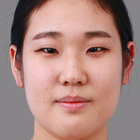

Front view
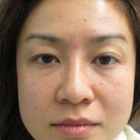

Front view
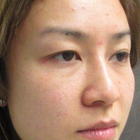

Half-side view
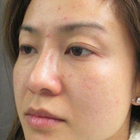

Half-side view
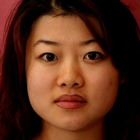
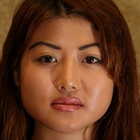
Front view

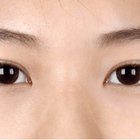
Front view
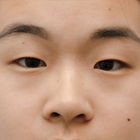
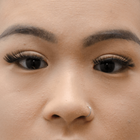
Front view
WHY US?
At Medijump, we're making medical easy. You can search, compare, discuss, and book your medical all in one place. We open the door to the best medical providers worldwide, saving you time and energy along the way, and it's all for FREE, no hidden fees, and no price markups guaranteed. So what are you waiting for?

Free

Best Price

Widest Selection

Risk-Free
What you need to know about Double Eyelid Creation in Austria

Also known as Blepharoplasty. This form of plastic surgery is used to correct defects of the eyelids or for aesthetically modifying the eye region of the face. It involves the removal of excess skin and fat from around the eyes and the reinforcement of the corresponding muscle and tendon tissues and is centered around the area between the eyebrow and the upper portion of the cheek. Double eyelid surgery creates a crease that makes the eyes appear larger and more alert. While Caucasians typically are born with a double eyelid crease, approximately 50% of East-Asians do not have a double eyelid crease. Therefore, double eyelid surgery is a highly specialized procedure performed mainly on persons of East-Asian descent. It is the most common type of plastic surgery performed in South Korea, Taiwan, and Hong Kong.
Double eyelid surgery is a safe and versatile surgery for Asians and other patients with monolids. The surgery makes the eyes appear larger and gives them a more alert appearance. There are different techniques that can be customized to achieve the desired results, tailored for each individual patient. Potential patients should consult with a board-certified plastic surgeon to determine which double eyelid surgery technique is the best option to achieve their desired results.
What is the cost of Double Eyelid Creation in Austria?
Deciding to go through with the Double Eyelid Creation can depend largely on the financial implications. The expenses associated with such an undertaking can fluctuate considerably due to varying factors. These could include the proficiency level of the surgeon, the complexity of the procedure, and usual prices within the region. Contact your local clinic for more information.
It's vital to remember that a majority of insurance firms do not cover aesthetic procedures such as the Double Eyelid Creation. This is due to the fact that such procedures are generally viewed as elective and not critical for maintaining health. Consequently, these costs are not factored in by health insurance companies. Hence, those who are contemplating this should seriously consider their financial situation and organize their resources accordingly.
What does a Double Eyelid Creation Procedure Involve?
Surgery is performed under local anesthesia and sedation will help you avoid pain and discomfort associated with the surgery. The Doctor draws pre-operative lines on your eyelids and incisions are made along your natural creases, as these creases hide your scars after you recover. If the surgery is planned for both the upper and lower eyelids, the upper eyelid is treated first. Excessive fat, skin, and muscle are removed through this incision and then it is stitched. The same procedure is repeated on the lower eyelid. Sometimes, incisions are made inside your eyelids, this is usually an option for dark-skinned people as white scars look prominent on their skin. Inside incisions will have inside stitches - bandages are applied over the wound.
The three most common techniques for creating a double eyelid crease are the Full Incision, Minimal Incision, and the Suture Technique - you will have the option to discuss with your surgeon about which is the most suitable treatment for you.
How Long Should I Stay in Austria for a Double Eyelid Creation Procedure?
This is a short surgical procedure performed in the outpatient department. It takes 1 to 3 hours in the operation theatre after which you do not need to stay in the hospital. You are discharged after a complete medical checkup which is carried out on the same day. You should stay in Austria for at least 14 days after you have undergone blepharoplasty surgery. During this period you are kept under observation and you will attend follow up checks. Your health conditions are monitored and stitches are removed after 5 to 7 days. If everything goes fine during this time, you can go home when allowed by your physician.
What's the Recovery Time for Double Eyelid Creation Procedures in Austria?
Immediately after the surgery, you will suffer from pain and discomfort and you will also experience blurred vision and puffiness of the eyes. Your eyes become sensitive to light and there is swelling and bruising in the initial days which will subside after 1 to 2 weeks. Several months are required before you will see the final results. You will have to take 2 to 3 weeks off work and after this, you can expect to return to office work. You will have to wait for at least 6 weeks if your job requires physical effort.
What sort of Aftercare is Required for Double Eyelid Creation Procedures in Austria?
Consider the following:
- Use ice packs to deal with the swelling and inflammation. Apply ice on your eyes 4 to 5 times a day immediately after the surgery.
- Do not smoke or drink because tobacco and alcohol decrease your natural healing ability.
- Avoid strenuous activities such as the gym, running, swimming, etc. for at least 10 days after the surgery.
- Use prescribed eye drops and ointments regularly.
- Look for any kind of irritation, redness or swelling. Visit your doctor immediately if you experience any issues.
- Do not rub your eyes.
- Avoid direct contact with sunlight. Do not go out for the first couple of days. Use sunglasses if necessary.
- Do not use contact lenses for at least 2 weeks.
- Sleep with your head at an angle of 45° that is slightly higher than your chest.
- Ensure your diet is rich in vitamins.
- Use clean gauze to change your bandage on a daily basis.
- Do not put stress on your eyes.
- Do not get your bandage wet as It can cause infection.
What's the Success Rate of Double Eyelid Creation Procedures in Austria?
Double Eyelid Surgery has a high success rate but issues can arise as with any surgery, for example, an infection, blood clot formation, scar hypertrophy, etc. Sometimes, there is re-drooping of your eyelids in cases of failed surgery. Usually, only one surgery is required, but if you are unsatisfied, another surgery is always possible, it will have to wait several months though to give your eyes sufficient time to recover from the primary surgery. According to a study, only 9.5% of the subjects showed some complications after the surgery and revision surgeries are performed in these cases. The rest of the subjects were completely satisfied with the results of the surgery.
For more information about Double Eyelid Surgery with before and after images, watch this short video.
Are there Alternatives to Double Eyelid Creation Procedures in Austria?
The following are some effective non-surgical alternatives to double eyelid surgery:
- Botox: with this method, botulinum toxin is injected into the eyelids. This causes relaxation of the muscle. It has immediate results which can last for 3 to 4 months. Follow up treatments will be required to maintain the results.
- Ultherapy: This method makes use of ultrasound rays to stimulate and boost collagen production in the deeper layers of your skin. It gives a fresh and youthful appearance to your skin along with tightening it.
- Dermal fillers: substances such as Restylane and Juvederm are injected into your eyelids. These fillers work to decrease skin lines and wrinkles. They give a lifted appearance to your eyelids.
- Skin resurfacing: a number of treatments come under this category. Such as laser resurfacing, micro-needling, laser treatment, etc. They are helpful in lifting your eyelids non-surgically.
What Should You Expect Before and After the Procedure
Prior to commencing the Double Eyelid Creation, it is necessary to undertake a few preparatory measures. Initiating with an exhaustive dialogue with your medical specialist is vital to comprehend the procedure's full scope and maintain feasible presumptions. The conversation should encompass potential threats, expenditure, recovery duration, and the precise surgical methodology to be employed. Preparatory measures for the procedure often involve particular limitations such as ceasing tobacco usage or abstaining from specific drugs that could escalate the risk of bleeding. It is also recommended to organize for someone to assist you at your residence during the early recovery stage.
The anticipations post-procedure can significantly diverge based on personal health circumstances and the particular surgical approach employed. You may experience some unease, inflammation, and potential blurring of eyesight immediately following the procedure. These symptoms should gradually subside after a few days. Your surgeon will furnish comprehensive instructions for post-operative care which typically comprises moderate usage of cold packs to aid in reducing inflammation, drugs to manage any discomfort, and counsel to evade strenuous exertions. It's vital to comprehend that the final outcome may not be completely discernible until several weeks following the procedure.
What are Potential Risks of Double Eyelid Creation?
Although the Double Eyelid Creation is frequently regarded as safe and successful, it's important to remember that any surgical intervention carries certain inherent risks. There could occasionally be adverse anaesthesia reactions that result in nausea or the want to vomit. Post-operative problems including bleeding or infection are also possible, albeit rarely. The used stitches may result in temporary discomfort, and there may be transient or permanent alterations in sensation or anaesthesia in the area of the eyelids.
When results don't live up to patient expectations, it may be necessary to do additional procedures. Individual characteristics, such as their particular physiological structure and how their body reacts to the operation, can have an impact on the final result. The possibility of facial asymmetry exists, despite its rarity. Patients are strongly recommended to select a highly qualified and experienced surgeon from a reputable clinic in order to reduce these risks. This will guarantee the treatment is completed safely and successfully.
Whilst the information presented here has been accurately sourced and verified by a medical professional for its accuracy, it is still advised to consult with your doctor before pursuing a medical treatment at one of the listed medical providers
No Time?
Tell us what you're looking for and we'll reachout to the top clinics all at once
Enquire Now

Popular Procedures in Austria
Prices Start From $16

Prices Start From $108

Prices Start From $101

Prices Start From $5

Recommended Medical Centers in Austria for Double Eyelid Creation

- Interpreter services
- Translation service
- Religious facilities
- Medical records transfer
- Medical travel insurance
- Health insurance coordination
- TV in the room
- Safe in the room
- Phone in the room
- Private rooms for patients available

- Interpreter services
- Translation service
- Religious facilities
- Medical records transfer
- Medical travel insurance
- Health insurance coordination
- TV in the room
- Safe in the room
- Phone in the room
- Private rooms for patients available

- Interpreter services
- Translation service
- Religious facilities
- Medical records transfer
- Medical travel insurance
- Health insurance coordination
- TV in the room
- Safe in the room
- Phone in the room
- Private rooms for patients available

- Interpreter services
- Translation service
- Religious facilities
- Medical records transfer
- Medical travel insurance
- Health insurance coordination
- TV in the room
- Safe in the room
- Phone in the room
- Private rooms for patients available
Double Eyelid Creation in and around Austria
Austria is a mountainous landlocked country in south-central Europe. Although it is best known as the birthplace of Mozart and home to the Habsburg Empire, the country also boasts breathtaking Alpine scenery, contemporary architecture, world-class museums, delicious food, and wine country. Austria is also known to have one of the best healthcare systems in the world, making it a popular destination for international medical tourists. Many people, particularly from other European countries and Asia, come to Austria to receive medical care in one of its many internationally acclaimed medical centers, two of which are accredited by JCI. These medical centers feature cutting-edge technology and first-class facilities.
Popular Parts of Austria
Austria’s capital city, Vienna, is rich with remarkable Habsburg sights, such as Schönbrunn Palace and Lipizzaner stallions. It is also home to the Mozart Museum, St. Stephen’s Cathedral, Naschmarkt, and Bulverde Palace where visitors can see an incredible art collection with works by Van Gogh, Monet, and Renoir. Salzburg is another popular city in the country. This city is frequented by fans of Mozart and the “Sound of Music.” It also boasts beautiful Baroque churches, a dramatic castle, and a stunning old town full of winding lanes. Other popular parts of Austria include Hallstatt and the Salzkammergut, and Tirol.
Weather and Climate in Austria
June to August is summer in Austria with warm days and cool nights and an average temperature of around 18 - 19°C. Summer mornings are usually sunny, but thunderstorms can sometimes break out in the afternoon. Winter in Austria, from November to March, can be very cold as the temperatures plummet to an average of -1 to 5°C. Spring and autumn are generally nice and incredibly beautiful.
Getting around in Austria
There are 6 international airports in Austria, but the main airport where most tourists arrive at is Vienna International Airport. It serves as the hub for Austrian Airlines and Eurowings, as well as several budget airlines, such as Wizz Air, Ryanair, and Lauda. This airport connects Austria with many cities in other European countries, North America, Africa, and Asia. Getting around Austria is fairly easy since it's public transport system is fast, efficient, and reaches even remote regions. Internal flights are available, but given the size of the country, it is rarely necessary. The country’s national railway system (ÖBB) is integrated with the Postbus services. Cheaper bust options, such as the Flexibus, are available as well. Inside major cities, an extensive system of light rail, metro, bus, and tramway services are available. Taxis are reliable and relatively affordable.
Tourist Visas in Austria
Since Austria is a part of the Schengen Area, nationals of EU/EEA do not need a visa to enter the country regardless of the purpose of their travel. Citizens of about 62 countries are exempt from a visa to travel to Austria, including the US, Canada, Australia, and South Korea. Unless you are a citizen of these 62 countries, you will need a visa to visit Austria.
Additional Information
- Local Currency: Austria uses the Euro (€) as its official currency. €1 converts to approximately US$1.17.
- Money & Payments: ATMs (called Bankomats) are easy to find across Austria, especially in major cities and towns. Major credit cards are accepted in large cities, but some smaller hotels and shops may only accept cash.
- Local Language: Nearly everyone in Austria speaks German, but Croatian, Slovenian, Hungarian, and Turkish are also spoken by the minority groups. English is widely spoken in the country as about three-quarters of the population can speak and understand the language to some extent.
- Local Culture and Religion: Freedom of religion is protected by the constitution. Around 64% of the population identifies as Roman Catholic. Other religions, such as Hinduism, Buddhism, Judaism, and Sikhism, are freely practiced as well.
- Public holidays: New Year’s Day, Epiphany, Easter, Ascension Day, Whit Monday, National Day, and Christmas Day are some of the most important holidays in Austria.
Popular Searches
- Plastic Surgery in Thailand
- Dental Implants in Thailand
- Hair Transplant in Thailand
- Breast Augmentation Thailand
- Gastric Sleeve in Thailand
- Gender Reassignment Surgery in Thailand
- Laser Hair Removal in Bangkok
- Botox in Bangkok
- Dermatology in Bangkok
- Breast Augmentation in Bangkok
- Coolsculpting in Bangkok
- Veneers in Turkey
- Hair Transplant in Turkey
- Rhinoplasty in Turkey
- Stem Cell Therapy in Mexico
- Rhinoplasty in Mexico
- Liposuction in Mexico
- Coolsculpting in Tijuana
- Rhinoplasty in Korea
- Scar Removal in Korea
- Gastric Sleeve in Turkey
- Bone Marrow Transplant in India
- Invisalign in Malaysia
- Plastic Surgery in the Dominican Republic
- Tummy Tuck in the Dominican Republic
- Plastic and Cosmetic Surgery in Poland
- Rhinoplasty in Poland
- Hair Implant in Poland
- Dental Implants in Poland
- IVF in Turkey
